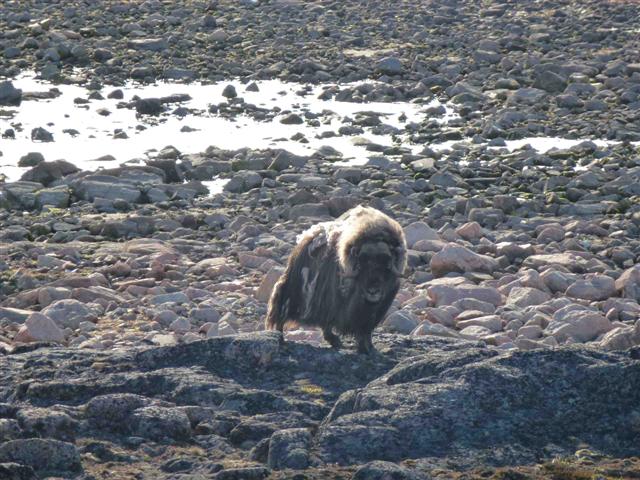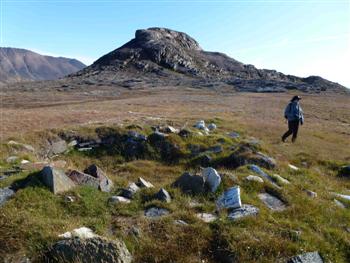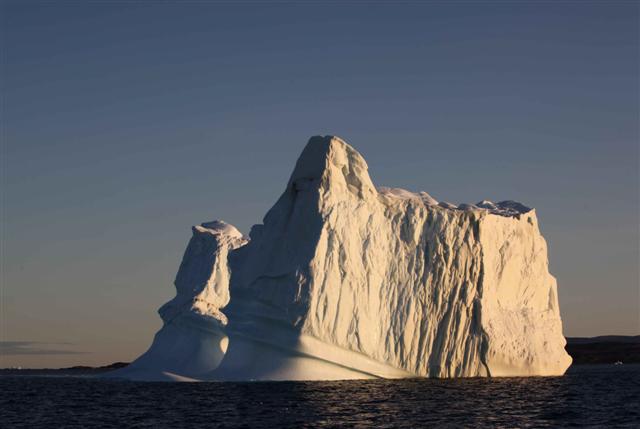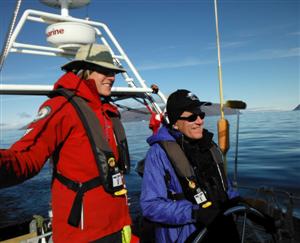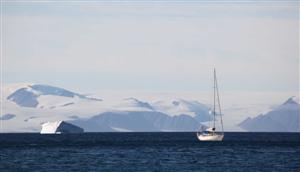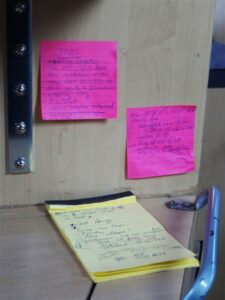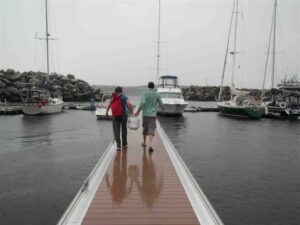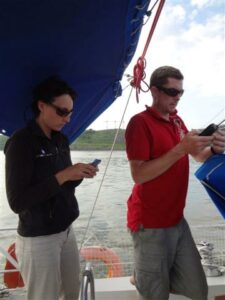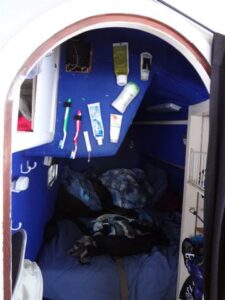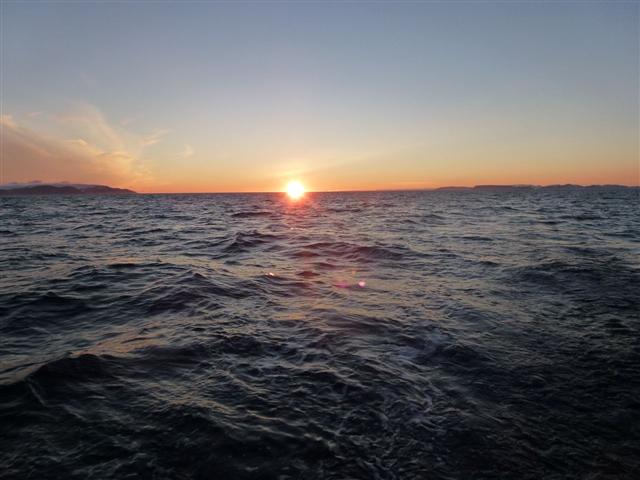
Arctic sunset © Martin von Mirbach / WWF-Canon
Our captain, Grant Redvers, is nothing if not safety-conscience. And that suits me just fine, especially here in Arctic waters, where rescue capacity is severely limited. So when Grant “suggests” the best time to make an open water crossing, we are eager to accept his recommendation. The sail from Cobourg Island in the mouth of Jones Sound to the southeastern corner of Devon Island, at the mouth of Lancaster sound, is one of those open water crossings. And, after checking and re-checking the wind forecasts, Grant reasoned that the best time to start the crossing would be in the later afternoon, sailing through the night.
Whenever we’re underway there are always at least two people “on-duty;” including one of the core crew members and one WWF-appointed participant. My “duty roster” was from midnight to 2am, so I took a wee rest after dinner, both in order to relax but also because the first part of the crossing was pretty rough, and lying prone in your bunk is one of the better ways to avoid seasickness.
As I was resting in my bunk, however, I noted the slow but steady change in the quality of light. So I decided to go up on deck a bit early, to see if the sun would set. On the one hand, we’re almost ten degrees north of the Arctic Circle, in a realm of continual daylight during the summer. On the other hand, we’re exactly two thirds of the way from the summer solstice (June 21) to the autumn equinox (September 21). On the equinoxes the axis of the Earth is aligned with its orbit around the Sun, and everybody on earth gets twelve hours of sun. The only exception to this is at the North and South poles, where the sun rises and/or sets at the spring and autumn equinoxes.
So, the question I wanted answered is – does the sun set on August 21
st, at 76 degrees north, or does it stay above the horizon? There are, of course charts and programs that can give me this information, but I wanted to see for myself, so I bundled up against the cold and ventured on deck shortly after 11pm. Sure enough, the sun was almost grazing the horizon, and by 11:30pm had set entirely, after a long an lovely sunset.
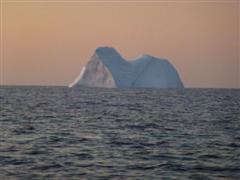
Iceberg at sunset © Martin von Mirbach / WWF-Canon
So, that answered my question, but also illustrated another interesting characteristic of light in the polar regions. In the tropics, the sun sets at a sharp angle, so that it quickly becomes pitch dark after sunset. In the polar regions, on the other hand, the sun sets at a shallow angle, so that even long after sunset it’s still just below the horizon, and so continues to illuminate the sky long past sunset. This is what filmmakers call “the magic hour,” but in the Arctic it lasts much longer than an hour, making for some lovely conditions to photograph icebergs in unusual light.
All in all, it made for a pleasant evening at the helm, and was a great opportunity for me and Pascale Otis, our awesome First Mate) to talk about all kinds of things while keeping each other awake and alert, and the boat on a steady course.
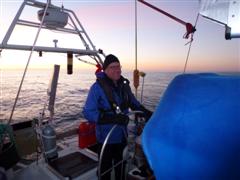
Martin at the helm. © Pascale Otis / WWF-Canon
My final question of the night was this: when will the sun rise? Will it rise again before the end of my shift? Pascale checked the computer and provided the informed opinion that the sun would rise at 3:23am. As for me, I didn’t get to see the sunrise, since when my shift ended at 2am I was all too happy to dive into my sleeping bag and slowly warm my toes. Nonetheless, the experience vividly illustrated some of the fundamental characteristics that make the Arctic a special place. Anthropogenic greenhouse gas emissions may be warming the Arctic twice as quickly as the global average, but the patterns of dawn, daytime and twilight remain utterly unchanged by the collective presence of seven billion of us.
